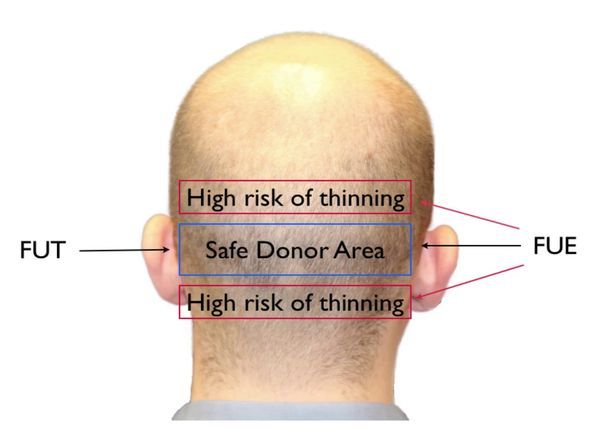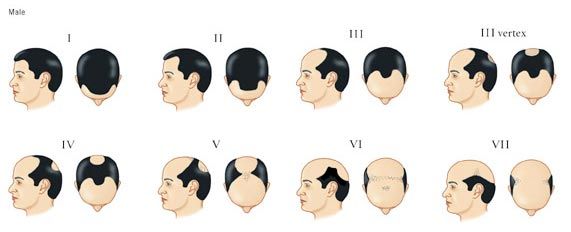To receive the hair transplant procedure is itself a planning and preparation related to the surgical job in the context of knowing the idea of when you are eligible to go through the surgical option and what extent it will help you to achieve the best results. The hair transplant procedure is the process of the combined activity of the scientific as well as aesthetic knowledge. The procedure is allowed when a patient fulfils the eligibility criteria that are rated on the basis of their available grade of baldness, the present donor state as well as the physiological and anatomical status of patients’ hair. The hair transplant procedure allows a patient to receive the original hair back from the patients’ own body part that never shows any kind of side effects.It is mandatory for the procedure that a patient must possess the good donor strength as it offers the required number of grafts to fulfil the baldness need. One must have a healthy and stabled safe donor area, i.e., the back and sides of the scalp (Occipital & Parietal part) to receive the procedure as it is the process that facilitates the implantation of hair roots by taking/extracting the hair follicles from the safe donor part of the scalp. However, it is mandatory for the hair loss patients having the good donor strength.
First of all, it must be noted that what is the process of hair transplantation and what are those important aspects concerned precisely with the procedure to achieve the best aesthetic outcome. However, we are mentioning here those aspects that are needed in the procedure primarily to achieve natural outcome.
Following is the quick-listing of the Important Aspects needed for the Hair Transplant Procedure are as follows: –
- The Donor area: Undergoing the hair transplant procedure is a big decision that only confirms when a patient possesses a good donor area. The donor area is what that offers the required number of grafts to fulfil the restoration job. The back and side area of the scalp is considered as the safest donor part as it contains the DHT-resistant hair roots that never fall out. However, a patient must have a stable donor area in order to receive the best results for the hair transplant procedure.

Safe Donor Area
- The Recipient Area: The recipient area is what where the live hair follicles/graft are implanted. The recipient area of the scalp is actually the affected part that has been lost the hair growth and now suffering from the hair loss problem. The hair transplant procedure is performed to implant the live hair grafts into the affected areas and one can re-achieve the natural looks and beauty via the hair transplant procedure.
- The Physiological & Anatomical status of Hair: The type of hair has also a main role in the hair transplant procedure as it decides the technique for the restoration procedure, whether it is FUT or the FUE hair transplant. The FUE hair transplant cannot perform when a patient has the curl or wavy hair, whereas the straight hair is considered good for performing the FUE technique. On the other hand, the FUT hair transplant can be allowed for any kind of hair.
In this article, we are mentioning the eligibility criteria to receive a Hair Transplant Procedure:
- The Age Factor: The age factor does matter in the hair transplant procedure as it is instructed that only the patient who is above the age of 25 considered as the suitable candidate for receiving the hair transplant procedure. The age factor at plays in the restoration procedure because the younger age doesn’t confirm us about the stability of the donor area. The donor area must be in the diseased-free stage and contains the stable hair roots to offer permanent outcomes.
- The Stable Donor area: The hair loss patient must have the stable donor area means they should have a healthy donor area (back & sides of the scalp) which is free from the spot baldness or the Alopecia areata. Once a patient attained the maturity stage means older than 25 years are considered as a good hair transplant candidate.
- The State of Norwood Baldness: The state of the Norwood baldness also tells about the right time to receive the procedure. If a patient is affected by a lesser grade of baldness like the NW-I, II, or III doesn’t consider as the eligible candidate to receive the restoration procedure. It is mandatory to receive the procedure to wait until the state of hair loss gets confirmed in terms of a stable donor area and the bigger grade of baldness. The onset of hair loss in a different state of Norwood baldness is the case of the Androgenic alopecia or the genetic balding that gradually increases with a bigger grade of baldness. However, the state of Norwood baldness has a significant role in receiving the hair transplant procedure.

- The Type of Hair Loss: It is an important concern in the hair transplant procedure that what type of hair loss you got affected by. The type of hair loss is a major factor that decides not only the method of hair restoration but also tells about the best alternative to receive the procedure. The Androgenic alopecia or the genetically caused hair loss is only treated with the hair transplant procedure, whereas the Alopecia areata or the spot baldness is treated with the prescribed medicines. And the technique of hair transplant for the spot baldness case is allowed when it is in a very primary stage or when the donor areas are still safe against the Alopecia areata case. However, it is a concerning aspect of the procedure and must be evaluated under the expert surgeon to know the best treatment option.
So, it is good to go through the primary consultation with your hair loss Doctor if facing any kind of hair loss issue. Always find and select that surgeon who has many years of experience with a number of successful hair transplant cases before. The expert surgeon assures you about the best original outcomes.